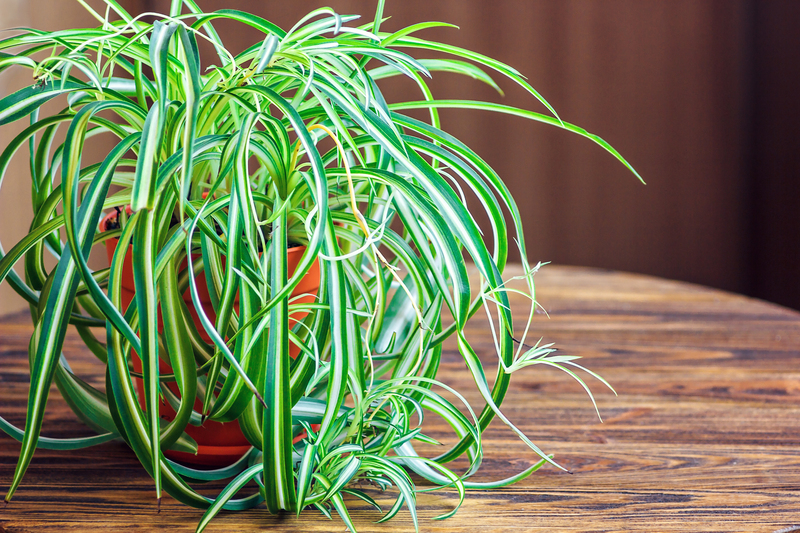Why You Should Aerate Your Lawn
Posted on 12/05/2025
A lush, green lawn is a cornerstone of a beautiful yard, but maintaining it requires more than simple watering and mowing. One critical step often overlooked is lawn aeration. Aeration involves perforating the soil with small holes to allow air, water, and nutrients to penetrate the grass roots. This process helps the roots grow deeply, producing a stronger, more vigorous lawn. In this article, we'll dive deep into the reasons why you should consider aerating your lawn.
Improved Soil Health
Your lawn's soil is the foundation of its health and vitality. Over time, soil can compact, especially in areas with heavy foot traffic or clay soils. Compaction reduces the soil's ability to retain air and water, ultimately stifling grass growth. Aeration alleviates this compaction, allowing the soil to breathe. By introducing air pockets, aeration facilitates better water and nutrient absorption, promoting a healthier root system.

Enhanced Nutrient Absorption
Nutrient uptake is essential for any plant's growth, and grass is no exception. When soil is compacted, nutrients can't reach the root system effectively. Aeration helps to break through this barrier, ensuring that essential nutrients like nitrogen, phosphorus, and potassium can reach the roots. A well-nourished lawn is not only more robust but also more capable of withstanding stress from diseases and environmental factors.
Water Efficiency
Water is a precious resource, and optimizing its use is beneficial for both your lawn and the environment. When soil is compacted, water tends to run off rather than soak in, leading to wasted water and poor lawn hydration. Aeration allows water to penetrate deeper into the soil, reducing runoff and ensuring that grass roots receive ample moisture. This efficiency can lead to reduced watering needs, saving you both time and money.
Less Thatch Build-Up
Thatch, a layer of dead grass and organic matter, can accumulate on the surface of your lawn over time. While a small amount of thatch is normal, excessive build-up can create a barrier that prevents water, air, and nutrients from reaching the soil. Aeration helps to break up thatch, promoting its decomposition and integration into the soil. This not only improves lawn health but also reduces the need for thatch removal treatments.
Disease Resistance
Aeration can play a significant role in preventing lawn diseases. Compacted soil and excessive thatch create an environment where diseases like fungus and mold can thrive. By improving soil aeration and reducing thatch, you create conditions less conducive to disease. Healthy grass with strong root systems is better equipped to fend off diseases, leading to a more resilient lawn.
Increased Turf Density
A dense, thick lawn is the best natural defense against weeds. When grass plants are sparse, they leave gaps that weeds can easily invade. Aeration encourages the growth of new roots, leading to thicker grass coverage. This increased density can choke out weeds, reducing the need for herbicides and making your lawn easier to maintain.
When to Aerate Your Lawn
Timing is crucial when it comes to aeration. The best time to aerate your lawn depends on the type of grass you have. Cool-season grasses like Kentucky bluegrass and fescues benefit from aeration in early spring or fall. Warm-season grasses like Bermuda and zoysia are best aerated in late spring or early summer, when they are actively growing. Additionally, it's essential to aerate when the soil is moist but not waterlogged to ensure the best results.
Types of Aeration Equipment
There are various tools available for lawn aeration, ranging from simple manual aerators to advanced motorized machines. Here are some common types:
- Spike Aerators: These tools create holes by pushing spikes into the ground. While they can alleviate compaction, they don't remove soil plugs, which is less effective in the long term.
- Core Aerators: These machines remove small plugs of soil from the lawn, offering the most effective method of aeration. The removed plugs break down and redistribute nutrients.
- Slicer Aerators: These machines use rotating blades to slice through the soil, creating pathways for air, water, and nutrients without removing soil plugs.
DIY Aeration vs. Professional Services
Deciding whether to aerate your lawn yourself or hire a professional depends on several factors, including your lawn size and condition, your budget, and your willingness to invest time and effort. Here are some pros and cons to consider:
- DIY Aeration: Renting aeration equipment from a local garden center can be a cost-effective option for smaller lawns. However, operating the machinery requires physical effort and may not be suitable for everyone.
- Professional Services: Hiring a professional lawn care service can be more expensive, but it ensures the job is done correctly. Professionals have the expertise and equipment to handle larger lawns and severe compaction issues.

Post-Aeration Care
Aeration is just the first step; proper post-aeration care is crucial to maximizing its benefits. Here are some tips for after you aerate your lawn:
- Watering: After aeration, ensure your lawn receives adequate water to encourage new root growth. Watering deeply and infrequently is more effective than shallow, frequent watering.
- Fertilizing: Apply a high-quality lawn fertilizer to provide essential nutrients. Aeration creates an ideal environment for fertilizers to penetrate the soil and reach the grass roots.
- Overseeding: Consider overseeding your lawn after aeration to fill in bare spots and improve turf density. The aeration holes provide an excellent environment for new seed germination.
Conclusion
Lawn aeration is a vital yet often overlooked aspect of lawn care. By improving soil health, enhancing nutrient absorption, optimizing water use, reducing thatch build-up, preventing diseases, and increasing turf density, aeration contributes to a more lush, healthy, and resilient lawn. Whether you choose to do it yourself or hire a professional, incorporating aeration into your lawn care routine is a wise investment in the long-term beauty and health of your yard.




